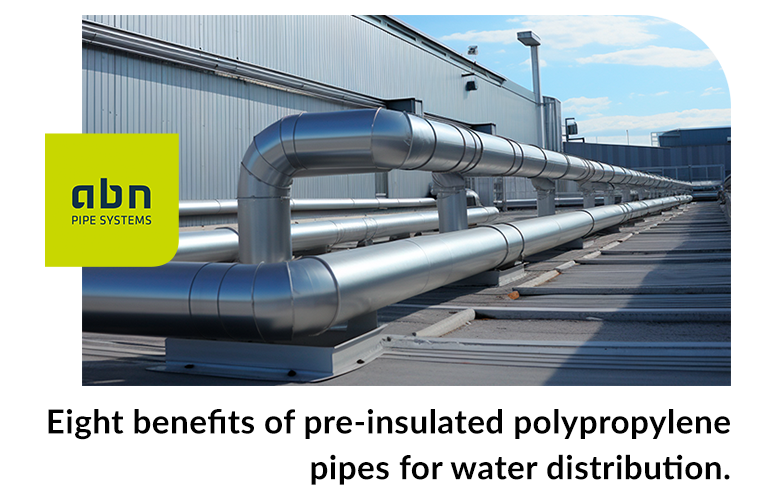Dentro del ámbito de la ingeniería y la edificación, los sistemas de distribución de agua son esenciales para garantizar el suministro de agua potable y la eficiencia energética en estructuras urbanas e industriales.
That’s why keeping these pipe networks up to date and taking care of their maintenance should be a priority.” To achieve this, the materials that make up these networks play a crucial role because their suitability will also be linked to their characteristics.
Importance of water distribution networks.
Potable water distribution networks are the network of pipes located beneath urban areas that connect with buildings and residences to ensure that water reaches from the source to the point of consumption in optimal conditions, both in quality and quantity.
It is important to note that water is transformed into potable water before distribution, so any contact with external substances or corrosion of the materials that make up the network can cause it to lose its purity.
Therefore, more and more investment is being made in research and testing materials that promote the efficiency of the installation. Among the most significant developments in this field is the use of pre-insulated polypropylene pipes.
Pre-insulated polypropylene pipes and their positive impact
In order to prevent any type of leakage or contamination of water, it is very important that the pipes through which they circulate are in good condition and that their components are of good quality.
One of the materials that guarantee water quality is polypropylene. This product guarantees excellent performance in different applications, including chilled and hot water systems, district heating, district cooling/heating and VRF/VRV, thus differentiating itself as an ideal solution for the refrigeration industry and other fields.
Their impact in reducing energy consumption, extending service life and ease of installation translates into economic and environmental benefits, which are detailed below:
Design versatility
This type of piping is easily adaptable to projects with different configurations. This allows engineers and architects to design more efficient and, above all, optimised solutions for each individual case, improving the performance and efficiency of the systems.
Resistance to extreme temperatures
The pipes can withstand adverse weather conditions, minimising the risk of freezing and ensuring fluid supply at all times. This is especially beneficial in cold climates, where uninsulated pipes could be damaged and affect the essential heat supply.
Reduced heat losses and energy savings
The insulation incorporated in these channels minimises heat transfer between the water flowing through the piping system and the outside due to its high insulation.
This condition translates into higher energy efficiency and lower consumption of resources to maintain proper water temperatures.
Lower pressure loss
This type of pipe tends to have a smoother inner surface compared to other materials, promoting less pressure loss in the flow of water. This is important to maintain efficient water distribution.
Commitment to sustainability
These pipes not only promote energy efficiency, but also offer benefits in terms of environmental sustainability.
Reducing energy consumption reduces the demand for fossil fuels and less greenhouse gases are emitted into the atmosphere. In addition, by minimising heat and water losses, natural resources are saved and the environmental impact is reduced.
Ozone friendly
The insulation used in pre-insulated polypropylene pipes is 100% ozone friendly as it does not contain harmful chemicals such as chlorofluorocarbons (CFCs) or hydrofluorocarbons (HFCs). This feature contributes to the fight against climate change.
Longer service life
Its corrugated, impact-resistant structure provides additional protection against wear and possible mechanical deformation, ensuring durability and strength.
In addition, the outer layer of the pre-insulated polypropylene pipes is corrosion resistant, thus ensuring the protection of the inner pipe.
Lower certified environmental impact
Such pipes help to ensure that a building is sustainable. In this case, there are different seals that promote eco-efficiency standards and certify that buildings comply with sustainability requirements, such as:
- LEED (Leadership in Energy & Environmental Design) is a certification system for sustainable buildings that classifies them according to their degree of excellence.
- BREEAM (Building Research Establishment Environmental Assessment Methodology) is a methodology for assessing and certifying the sustainability of buildings which, like LEED, covers the different phases of design, construction and use of buildings.
- Passivhaus is a building standard that combines high indoor comfort with very low energy consumption, thanks to maximum care of the building envelope and a controlled ventilation system.
